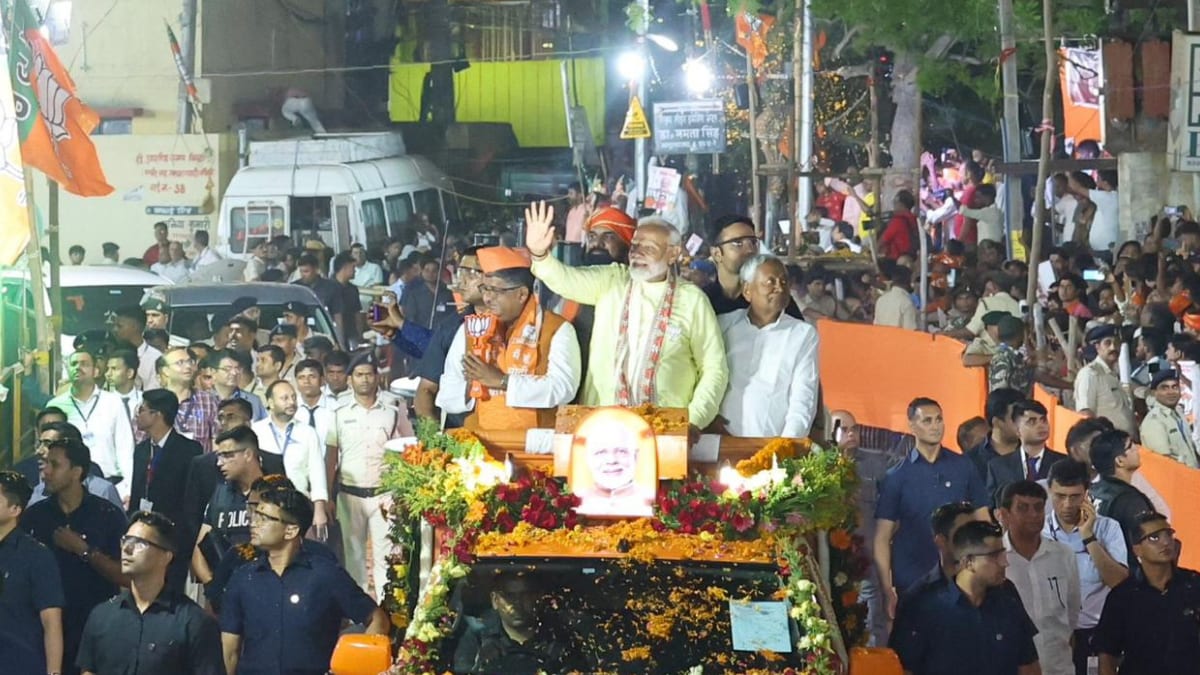As the Election Commission of India has announced the poll dates for Bihar as Nov 4 and 7, while counting will be on Nov 14, the state is once again bracing for a political showdown. The NDA and the India Alliance are loudly staking claims, but a new entrant, poll strategist-turned-politician Prashant Kishore, is emerging as a disruptor in a state long defined by opportunism and volatile loyalties.
Bihar’s politics has always been a theatre of unpredictability. Nitish Kumar, the JD(U) leader, has earned a reputation as a “paltu ram,” switching alliances at will to cling to power. Meanwhile, the RJD-Congress alliance faces its own credibility crisis, with voters increasingly frustrated by internal squabbles and questionable campaign strategies. Against this backdrop, the 2025 assembly elections are less a routine exercise and more a litmus test of political acumen and public patience.

For the NDA, returning to power is crucial not only for Bihar but for its national momentum. With state elections in Tamil Nadu, Karnataka, and elsewhere lined up over the next two years, a decisive Bihar win would provide the BJP-JD(U) a springboard to challenge regional rivals like DMK-Congress and AIADMK. While Nitish Kumar grapples with anti-incumbency sentiment fueled by his shifting alliances, the RJD-Congress camp has often sabotaged its own prospects. Ill-conceived campaigns—including baseless allegations of “vote chori” and attacks on Prime Minister Narendra Modi’s mother—have risked alienating voters at a pivotal moment.
Seat-sharing dynamics further favor the NDA. The BJP is set to contest roughly 110 seats, while JD(U) is expected to contest around 90–95, with smaller allies accommodated proportionally. By contrast, the India Alliance remains mired in internal discord: Congress demands 80–85 seats, while the RJD appears willing to concede only 50–52. This infighting could prove costly in a state where coalition cohesion is essential.

Pre-poll surveys suggest the NDA’s advantage is substantial. The Times Now-JVC opinion poll projects the NDA securing 136 seats in Bihar’s 243-member assembly—comfortably above the majority mark of 122. The Mahagathbandhan, led by RJD, may manage no more than 75 seats, with Congress failing to reach double digits. The BJP is expected to increase its tally from 74 seats in 2020 to 81, while JD(U) could secure 29, retaining an edge in two constituencies. Within the India Alliance, RJD is projected at 52 seats (down from 75), and Congress at 10 (down from 19).
Political strategist JVC Sreeram warns that the India Alliance’s internal tensions could be fatal. “If Congress contests 70 seats, the NDA’s share could rise to 150,” he notes. “RJD needs to replace Congress in many constituencies to stay competitive,” highlighting the alliance’s structural weaknesses.

The SPICK Media Network survey reinforces the NDA’s commanding position. It projects 158 seats with 46% vote share for the NDA, while the Mahagathbandhan is pegged at 66 seats with 41%. The Jan Suraj Party, led by Prashant Kishore, is expected to capture 8% of votes—a minor but potentially disruptive factor. On the chief minister’s preference, Nitish Kumar leads narrowly at 27.4%, Tejashwi Yadav at 25%, and Kishore at 15%, signaling a shifting voter mood.
Other surveys echo these trends. The JVC poll predicts NDA between 131–150 seats, Mahagathbandhan 81–103, and Jan Suraj 4–6. Nitish Kumar retains both seat and popularity advantage, while Tejashwi Yadav slips to second place, highlighting declining confidence in RJD leadership. The Jan Suraj Party may siphon 10–11% of votes in key constituencies, enough to influence outcomes in tight contests.

As Bihar prepares for what could be a defining election, one thing is unmistakable: the NDA holds the structural advantage, backed by alliance discipline and growing voter fatigue with the RJD-Congress cycle of missteps. With Nitish Kumar retaining popularity and Prashant Kishore shaking the status quo, surprises remain possible—but the writing on the wall favors the NDA. November may well determine not just Bihar’s political trajectory, but also set the tone for the BJP’s national strategy in the coming years.




